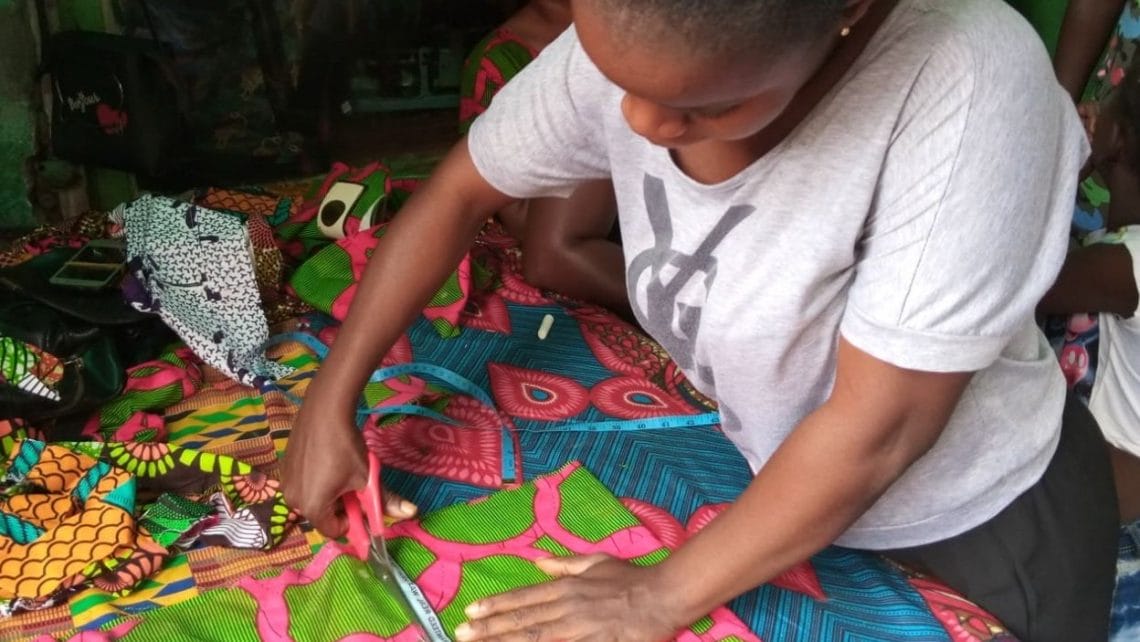Eleanor, a young woman living in Monrovia, the capital of Liberia, wants to start a business to improve her family’s life. As a young girl, she saw the women in her life braiding hair – her aunt worked at a hair salon, and her mother taught her how to braid. When deciding what kind of business to start, hair braiding was an obvious consideration. She also noticed that jobs and businesses in other sectors such as construction would require training, so she didn’t consider them, even though they are more profitable than hair braiding and more needed in her community. Eleanor’s story is hardly unique. Globally, women are 67% less likely than men to work in industrial sectors—traditionally thought of as male-dominated, even though workers in such male-dominated sectors earn 5-43% more than those in predominantly female sectors. Behavioral science offers an innovative way to consider this problem and creative ways to address it.
Over the past year, ideas42, the World Bank, and the project management team of Liberia’s Youth Opportunities Project (YOP), implemented by the Ministry of Youth and Sports (MYS) and the Liberia Agency for Community Empowerment (LACE) in partnership with Educare Liberia, collaborated to apply a behavioral lens to the Small Business Support (SBS) component of the YOP, which supports urban youth in opening and running small businesses. We developed a memo highlighting the lessons learned from this collaboration, which was generously supported by the RSR Gender-Smart Social Protection Multi-Donor Trust Fund and an anonymous donor.
One aspect of the collaboration focused on understanding barriers women face in reaching their full economic potential and identifying ways to help them overcome those barriers. We found that one of the first steps to opening and operating a successful business is selecting the ideal sector for the business. But fully considering all potential sectors before making a decision was something many SBS participants seemed to struggle with, especially women.
One reason women do not fully consider all potential sectors when identifying the optimal sector in which to open a business is that observed social norms can limit women’s perceptions of their own business options and areas in which they can excel. When women constantly see others around them participating in traditionally female-dominated, less profitable sectors, this can overshadow the less visible reality that some women have started breaking out of these traditional sectors with success. For example, in Liberian communities where YOP operates SBS, it is common to see women in hair braiding, tailoring, and catering businesses. Women working in these sectors are more visible to participants than women in other roles such as brick-making or construction, even though there are women successfully employed in these other sectors as well. As such, YOP participants often form mental models that hair braiding and tailoring are more suitable for women, leading female participants to not thoroughly consider other, more profitable business sectors when starting their own businesses.
Behavioral science offers insights that can help encourage women to consider all potential business sectors, including male-dominated industries or sectors. In many cases, choices that are perceived as the norm because they are more publicly visible may not accurately represent new trends and possibilities, and in such cases highlighting a positive but hidden trend can make a powerful difference. For example, providing examples of women in male-dominated fields can bring out this real possibility and increase awareness of successful women in such fields. This can help show women the range of options they can consider for their own businesses. In the context of the YOP, designs that include this principle are images of and conversations with women who participated in previous rounds of SBS and are successfully working in fields such as construction.
Another reason women may fail to fully consider all sectors when opening a business is the small hassles associated with breaking into a new sector, especially when women are already predisposed to believing they can only excel in certain fields through observations of other women in their life. For example, we found that the hassle of determining how and where to get training was an impediment to many youth considering new business sectors, but this was especially the case for women who harbored beliefs that there are only certain sectors in which women can excel. Specifically in Monrovia, training is required to partake in some male-dominated business sectors, such as brick making, and women reported that the hassles of finding someone to train them was a barrier to fully considering starting a business in these sectors.
Luckily, insights from behavioral science may again be able to help. One thing program designers can consider is providing clear and simplified information about trainings to participants, especially women. This can reduce hassles in determining how and where to get this training, making it more likely that they will consider starting businesses in these sectors. In the context of the YOP, one way this design principal is being applied is by having previous SBS women participants who obtained training and entered a male-dominated sector answer questions from new women participants about the training they obtained.
We intend to test the effectiveness of our designs and will share the broader results next year. In the meantime, we invite you to check out the full memo, “Behavioral Insights for Women’s Sector Choice in Liberia’s Youth Opportunities Project,” for more insights and design principles on how to help women consider and select the right business for them, ultimately improving their economic opportunities and livelihoods.



